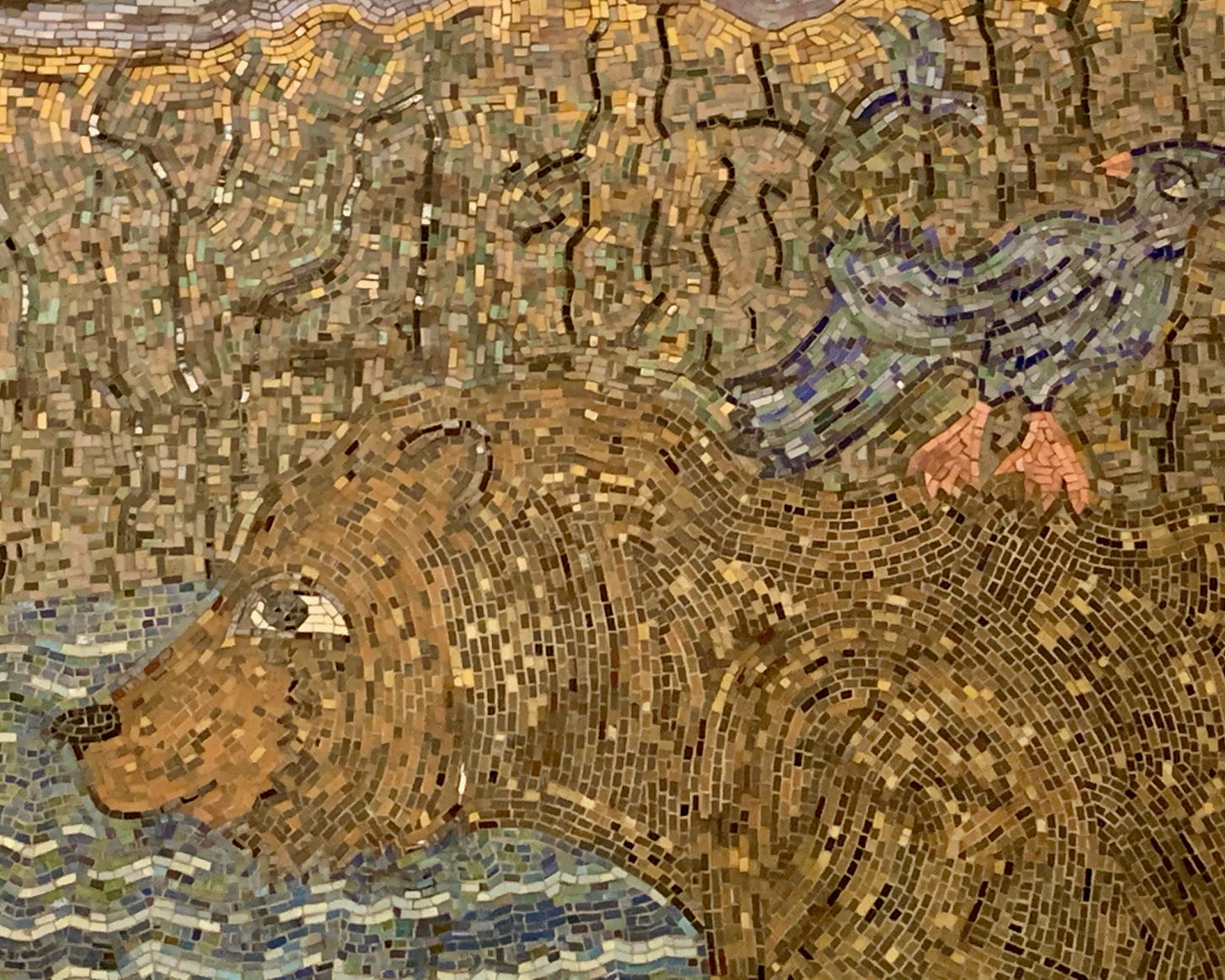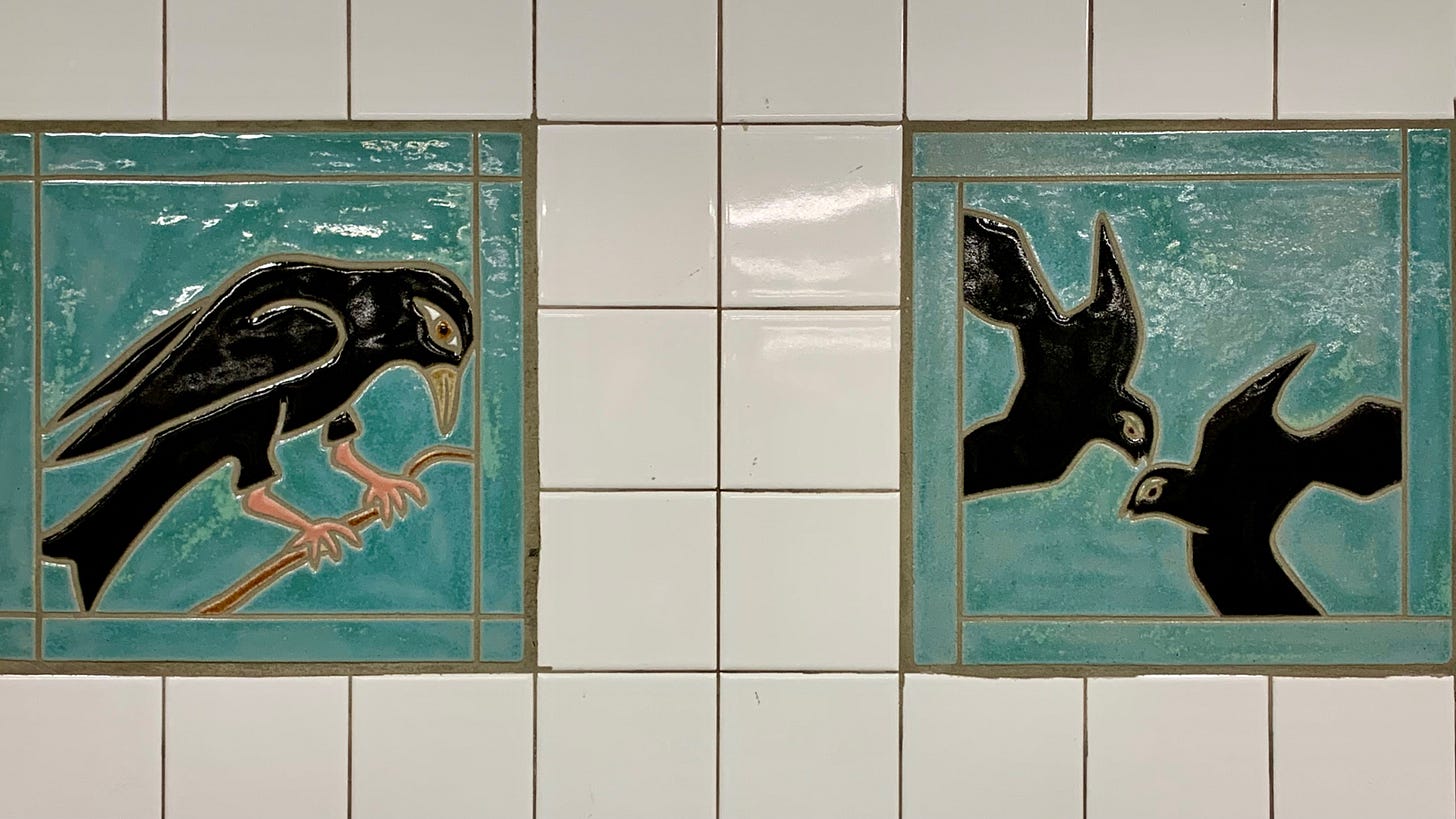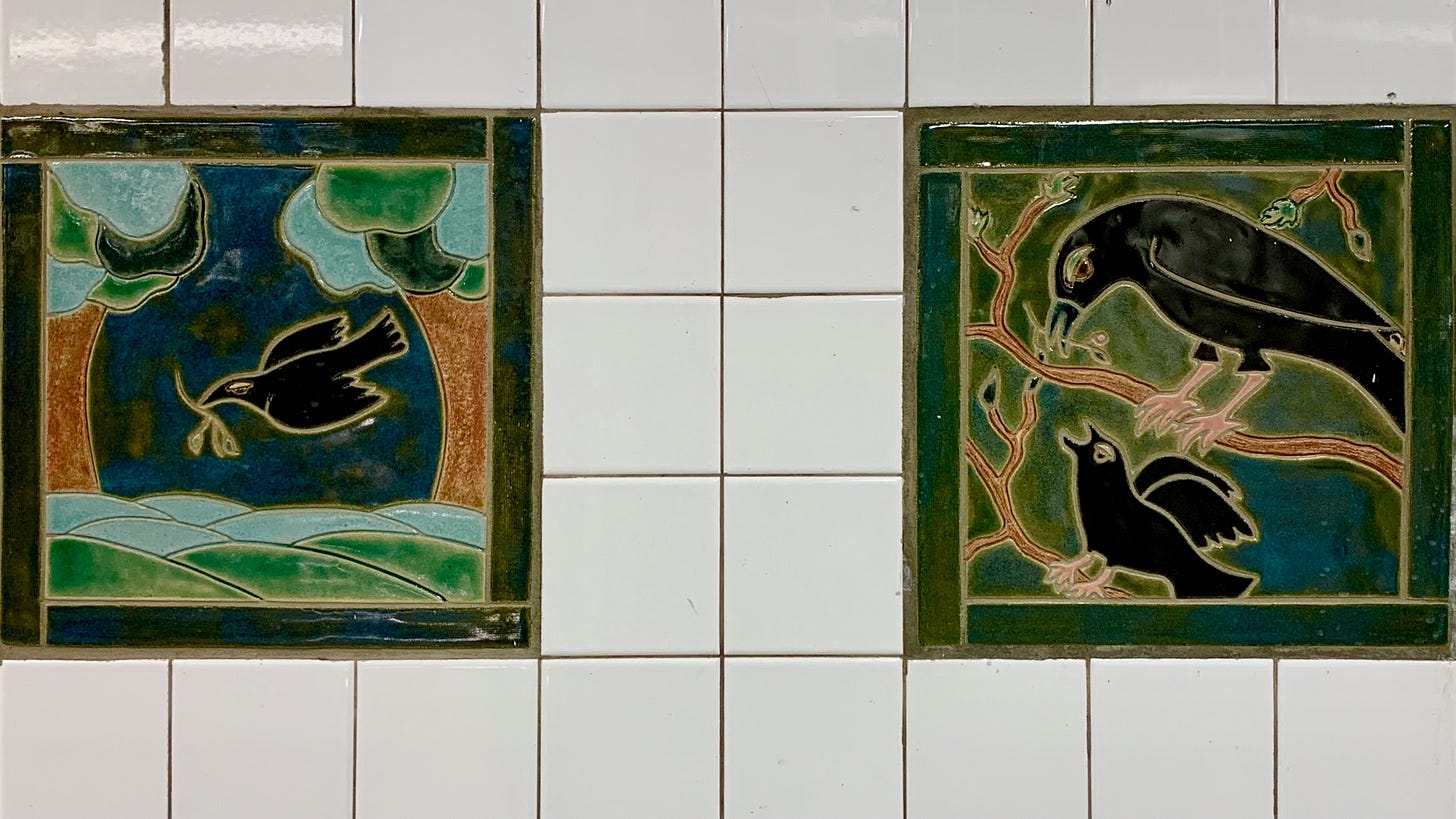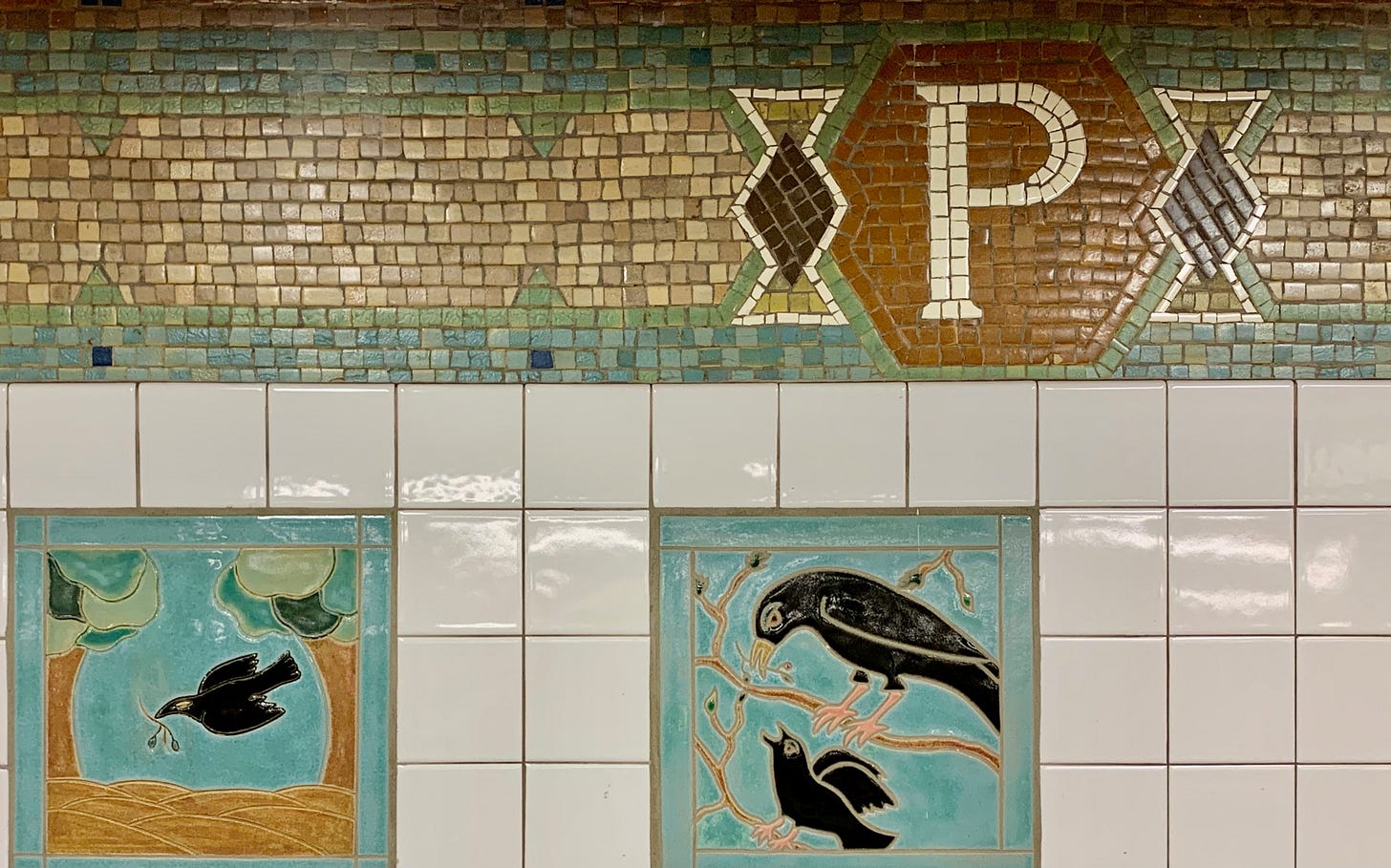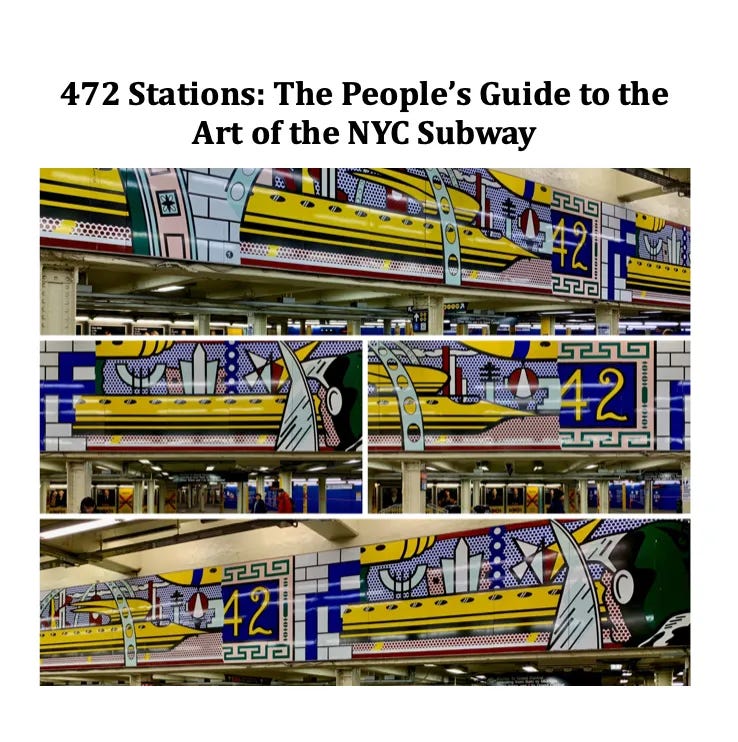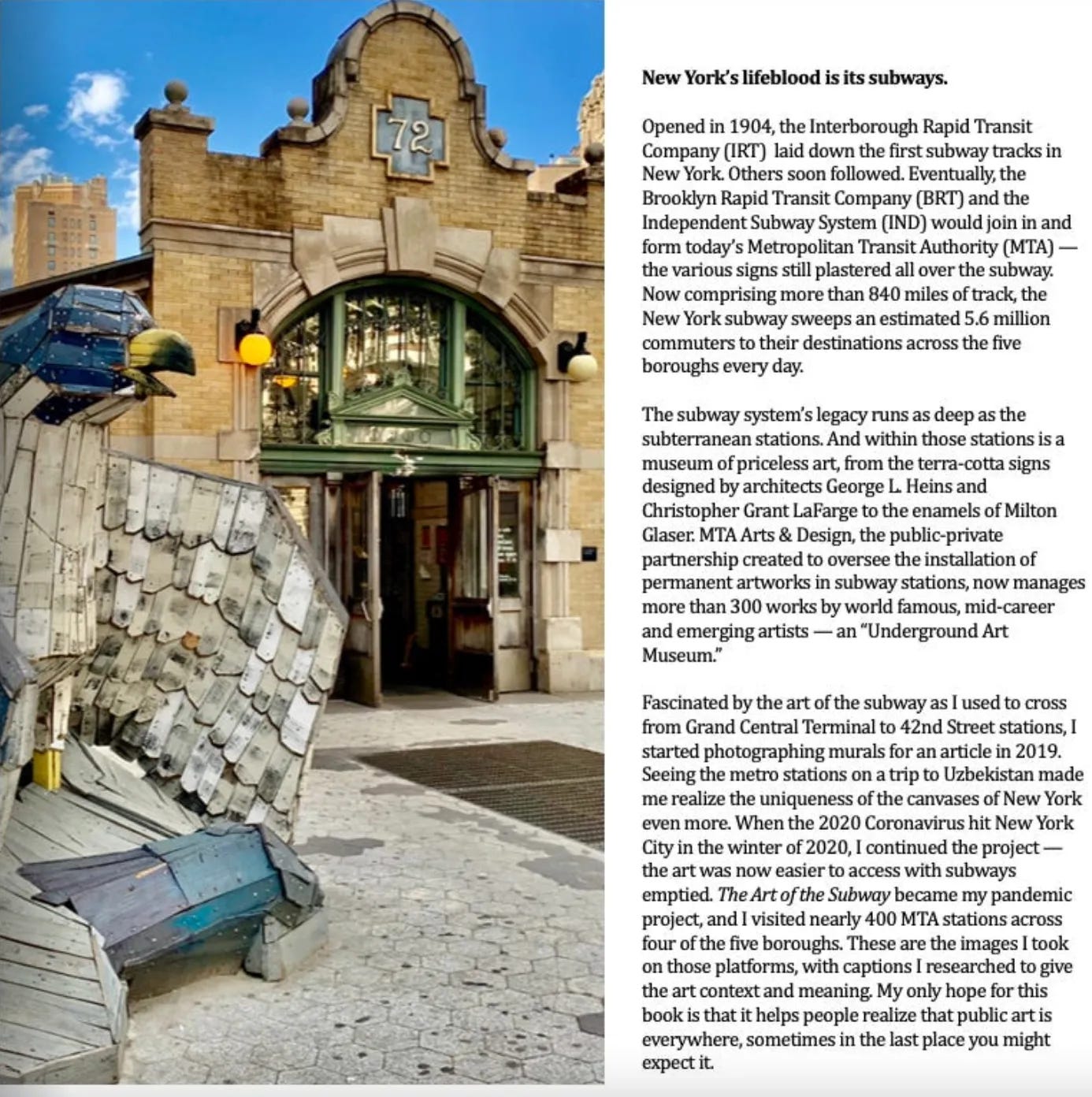More Urban Animals at 34th Street
Long before "Wild Things" downtown, NYC had "When the Animals Speak"
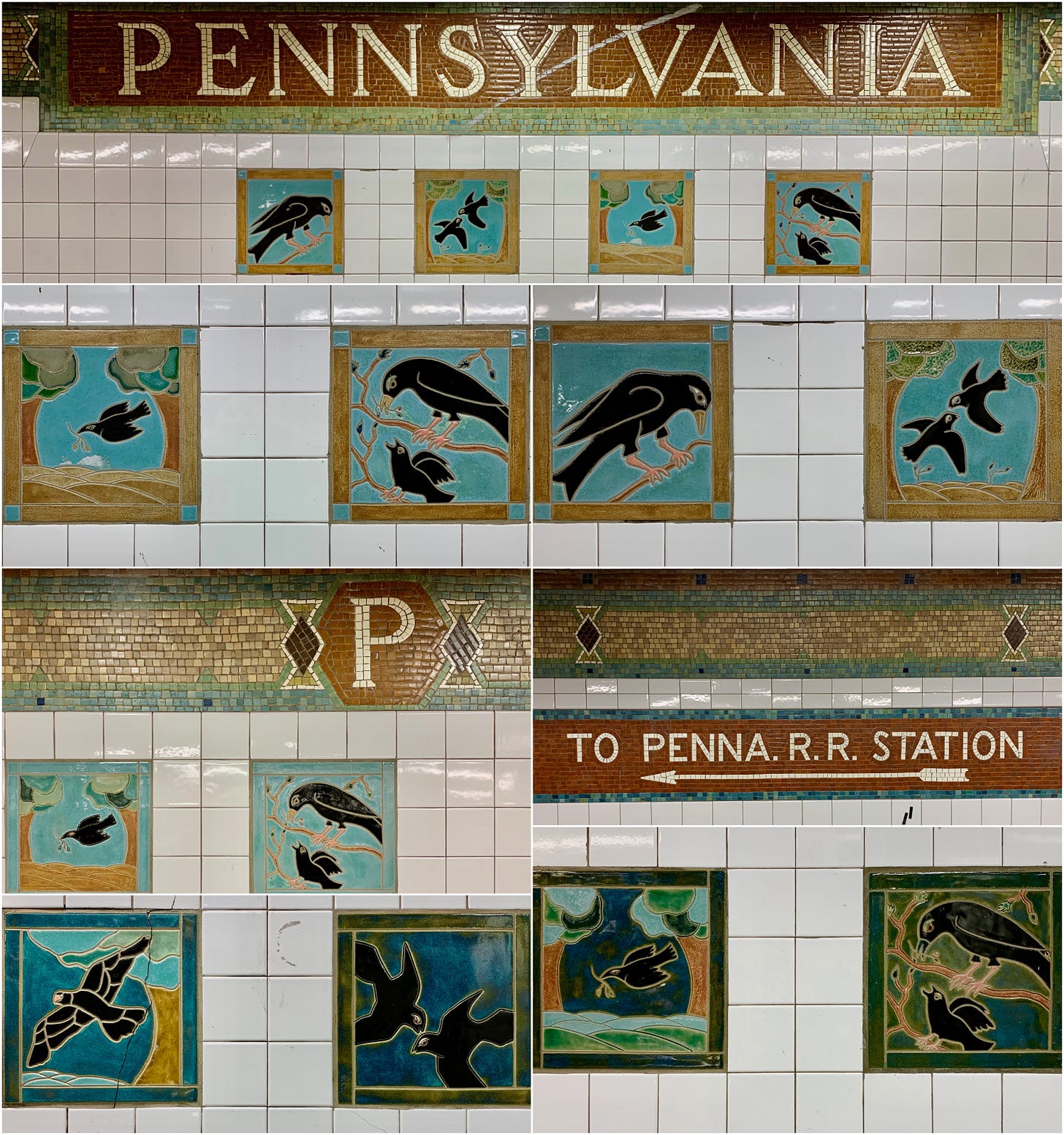
Let’s just face it, if New Yorkers want to experience nature, they are going to either visit upstate (meaning anything above the Bronx) or bicycle along the West Side highway. They will not walk down several long flights of stairs underground, push through a turnstile and wait around two minutes, or sometimes five, or late at night twenty, for a subway train and admire the subway tiles.
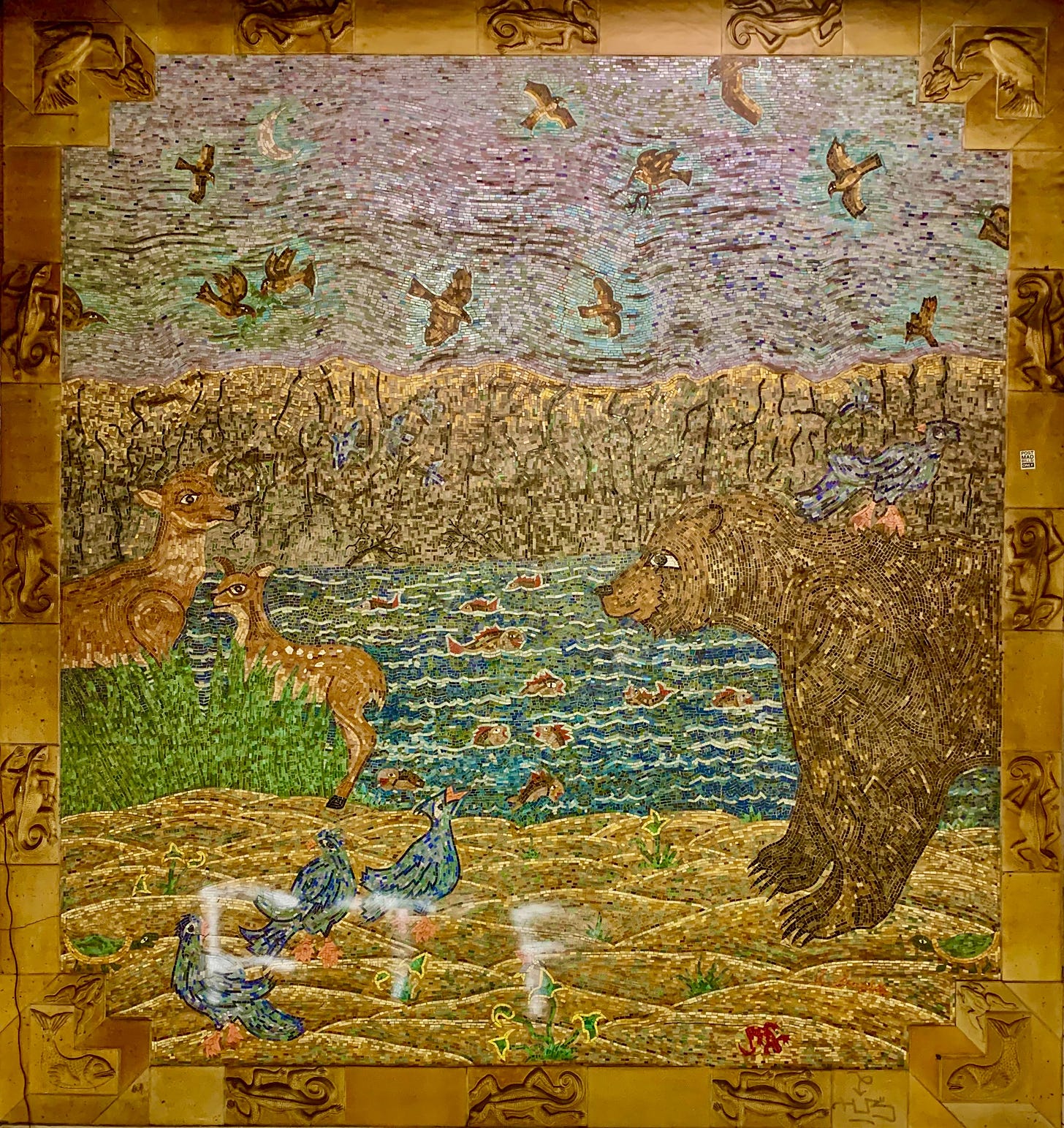
But the MTA doesn’t want you to know this… or the train times. Yes, the subway is full of nature. Plenty of nature five stories underground, it implies with all of the art motifs about animals and flowers and birds and such. Yeah, come on down, the art beckons. Come and see renderings of nature. Thus we have When the Animals Speak… (1998), the artist Elizabeth Grajales’ highly detailed mosaics showing wild beasts in a pastoral setting, reminiscent of 19th-century oil paintings. At one end of the platform, a pair of lions happily co-exist with birds along the Hudson River (the cliffs are the New Jersey Palisades). In the mosaic seen at the other end, a bear contentedly watches a doe and her young.
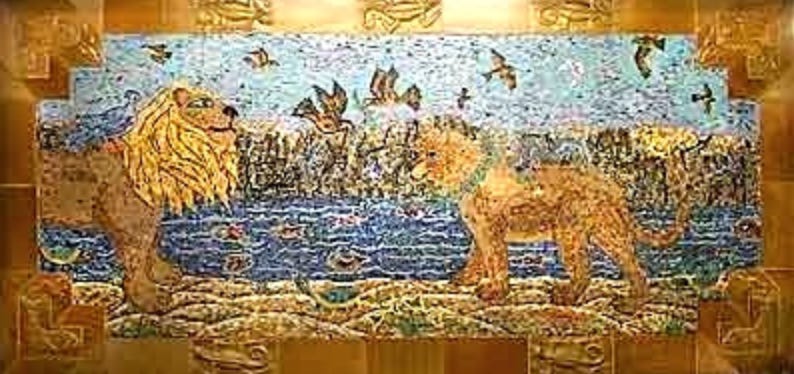
When choosing artists for the subway, the MTA Arts & Design — or at least under former director Sandra Bloodworth — usually looked for native New Yorkers to create the works that would become the supposedly indestructible art rendered in usually mosaic, sometimes steel, occasionally fiberglass. Elizabeth Grajales was born in Brooklyn, New York and first earned a bachelors in painting and drawing from Arizona State University where she developed a love of nature. She then studied landscape architecture City College of New York before going on to practice ceramics at Parsons School of Art. After receiving public art commissions from 1992 to 2000 throughout NYC, Grajales went on to become a public art project manager for the Phoenix Office of Arts and Culture Public Art Program.
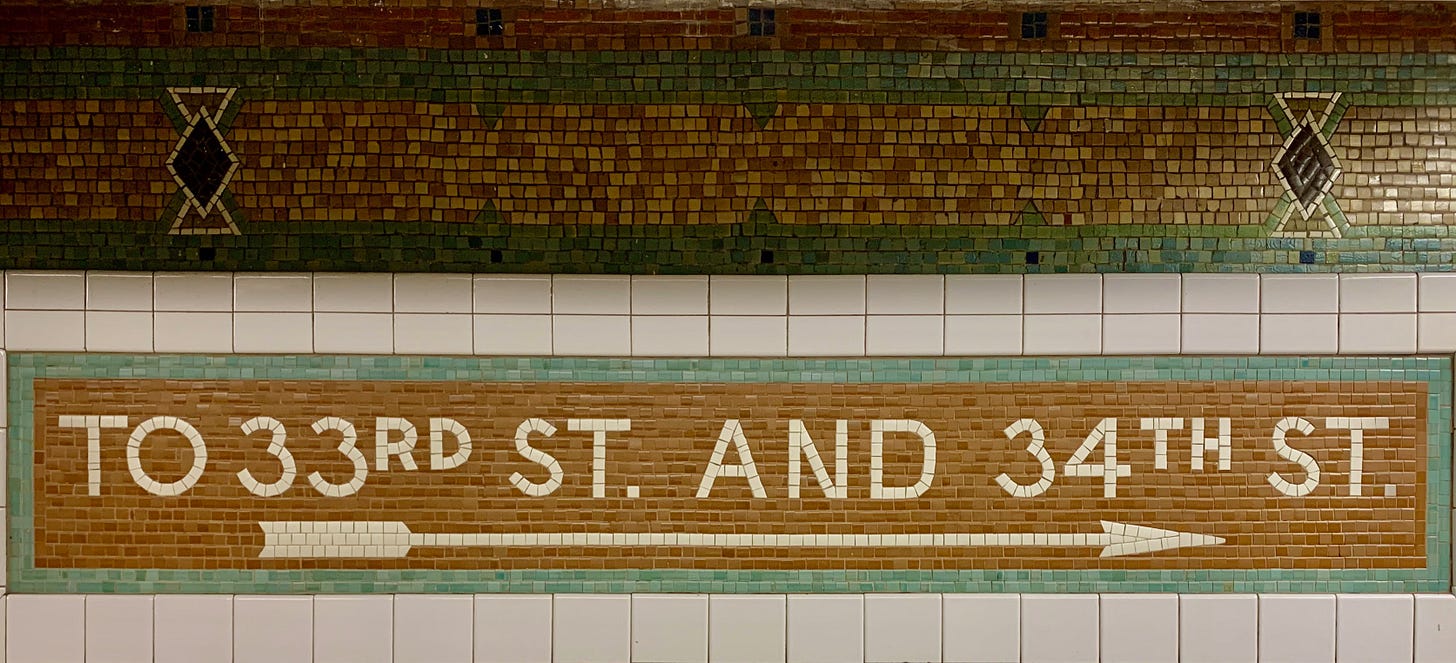
As a practicing artist, Grajales’ work has always been about nature. The second installment of her work at Penn Station, A Bird’s Life, consist of complimentary panels along the train tracks showing red-winged blackbirds, a migratory bird found in large numbers along the parks and rivers of New York. “As a child on shopping trips,” notes Grajales, “I wanted to give people something cheerful but also calming — a refuge in the city.” Designed to compliment the Squire Vickers’ Art & Crafts signs, A Bird’s Life nonetheless comes from “a vision from my dream world…” Grajales said of her work. “[They] represent the conflict in our environment between nature and man’s tools of destruction,”

Grajales, when working on her public art bird installations in Brooklyn, became a bit of a avian fanatic. One day in Prospect Park, she found 25 white pigeons abandoned in and ultimately four birds, which moved in with Grajales. But one flew the coop. Grajales posted 200 “Missing” fliers on the tree-lined streets of Park Slope. “I’ve been keeping a log (of the calls from the neighbors),” Grajales told the New York Times in 2000. “Tuesday morning someone called and said, ‘I think I saw your pigeon on Union and Fourth Avenue. Then someone from the zoo called and said a lot of pigeons come here for the feed.” One caller offered to set traps on his roof. Another told her that in Eastern religions, pigeons transport souls to the other world, the Times reported.

Grajales never found her lost bird, which she had been training to recognize its home. But the bird showed up in other work around the city, including P.S. 92, which has Who Else Shares Our World? an installation of over two hundred ceramic relief tiles of endangered species such as elephants, manatees, lemurs and the American bald eagle. But Grajales also included pigeons and crows along the columns of the school's corridors, as well as above the classroom entrances.

Coming Soon (Quarto, 2026): The People’s Guide to the art of all 472 stations of the New York City subway:
From 2018 through 2021, I stopped off at 400+ stations of the New York City subway, took photographs of the public art there and researched the origin of the art, first for Instagram, then for Substack, for a 2023 Spectator article and now, for a guidebook: 472 Stations: The People’s Guide to the Art of the New York City Subway has been optioned by Quarto in London. More information forthcoming.




